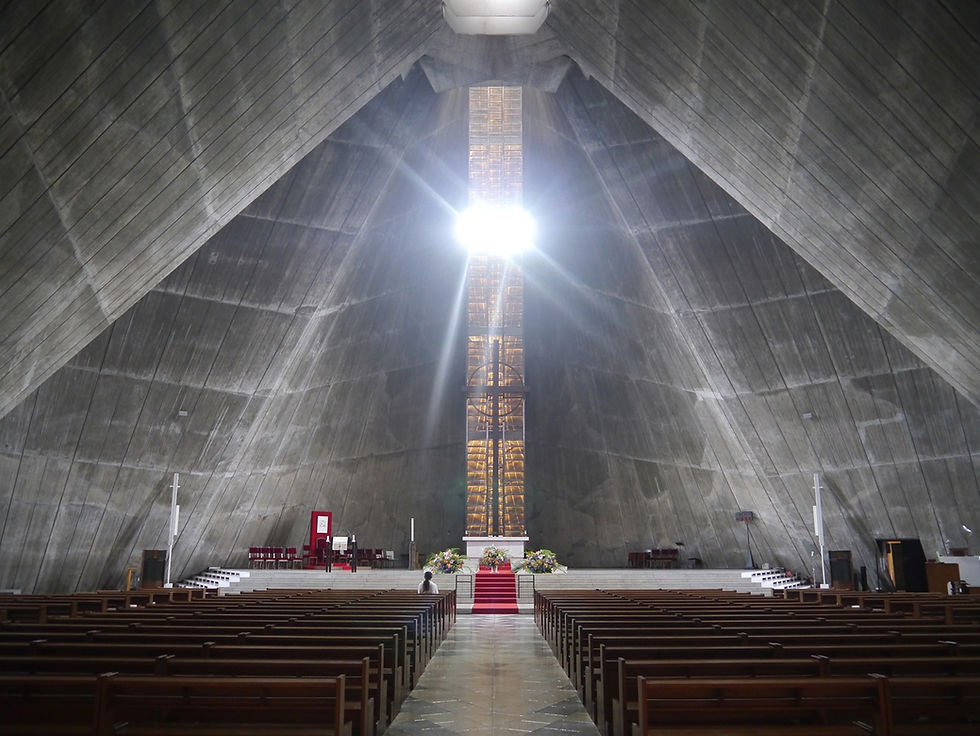Creating Influence
- ARCHIOL

- Jun 22, 2023
- 3 min read

“User Experience” … A word that added a new layer to the Architecture design process. It became one of the many layers the architects think about during drawing designs. “How does the user feel?” “What the user sees?” “Is that what I want?” became one of the fundamental things an architect asks about after a functionality of space. This layer which is called Sensory Design or Sensory Architecture, laid down the basis for the emergence of Responsive Architecture. A school of architecture which responds to the users and other parameters input in it in order to create different experiences all together each time for each user. This leads to an important question: by “sensory design” does it mean literally the five human senses or a more figurative sense?
In the literal sense, from the five biological senses, architecture is mainly a sight design or a design that affects vision. Still through many different techniques, subtle influences and effects may be incurred on the other 4. The ways of influence may differ from one architect to another and from one site to another. For example, influencing the sense of touch, taste and smell may be as simple as adding a water body if the site is in a dry area. This will subtly create a damper air in the space. Other architects may follow the more preferable way, a courtyard that will create a more controlled microclimate. In other sites, this may be a problem where the air is too damp, and there is a need to dry it. The sense that will need the architect to be more creative is the hearing sense as the control of sound in especially noisy places like city centers is extremely challenging. But this is a part of every architect and designer’s job for ever, so what is new?
Further down the line, the thing that made design a much more challenging and fun process is the figurative sense. Designing in a more figurative sense is how the architecture affects the user in many other aspects like psychology, emotion, behavior, religion and spiritually. Actually, this is not a new subject and most of the techniques are so old that they date back to ancient civilizations like the Egyptians, Romans, and the Greek. What sparked this debate again is the appearance of similar looking blocks in the architecture field that sacrifice their aesthetic values for a more optimized function. On the other hand, not only is the success of the project crucial without the loss of design aesthetics, but sacrificing its function for the sensory design is not acceptable as well.
Creating the sense and embedding them with the biological senses creates a wall an architect needs to surpass but once passed, the results are phenomenal. The results talked about is not just something out of the imagination or in theory, it is achievable and many have reached it in a lot of cases and projects. A lot of these cases have more flexible functional aspects like a museum, pavilion or monument, but still many succeed in more inflexible functions that follow strict rules like in religion. Throughout history, sensory design had a huge impact on houses of worship and how each religion needs to translate the meaning of the religion into a spiritual design in the architecture.
Sensory Architecture became one of the most fundamental challenges designers face today, as it translates into something intangible and speaks to the none biological parts of the human. Sensory Design and Responsive Architecture became one of the fundamentals that users and architects in training look for in projects, as they add a whole a new level of meaning and interaction with the user. These types of design need to be more embedded in our architecture and research due to their many benefits and making them more accessible to various markets and not to only certain places and spaces.
AUTHOR
AHMED MOHAMMED HASSANEIN
An architecture student in Ain Shams University, Cairo, Egypt. This is the last year in the undergraduate program hoping to start the masters study directly after graduation. Other hobbies include music where there was a short time job on composition and other is sketching with graphite and charcoal. Hoping for the best and always looking for the optimistic future even these times.
References:
Lehman, M.L. (T.D.). How Sensory Design Can Help Resposive Architecture be more Effective. MLLDesginLab. https://www.mlldesignlab.com/blog/how-sensory-design-can-help-responsive-architecture-be-more-effective
Allen, K. (2018, October 20). This Week in Architecture: More Than Visual. Archdaily. https://www.archdaily.com/904318/this-week-in-architecture-more-than-visual
Bucknell, A. (2018, October 15). Touch it, Smell it, Feel it: Architecture for the Senses. Archdaily. https://www.archdaily.com/903925/touch-it-smell-it-feel-it-architecture-for-the-senses
Spence, C. Senses of place: architectural design for the multisensory mind. Cogn. Research 5, 46 (2020, September 18). https://doi.org/10.1186/s41235-020-00243-4



Comments